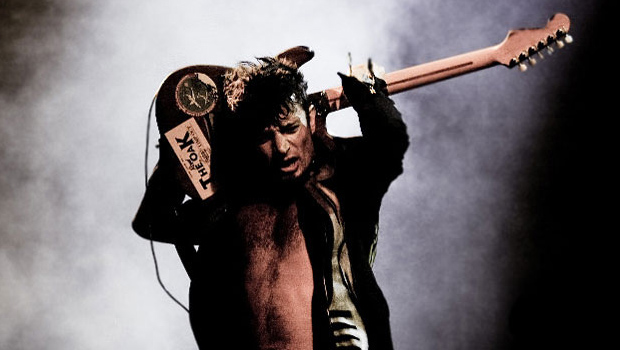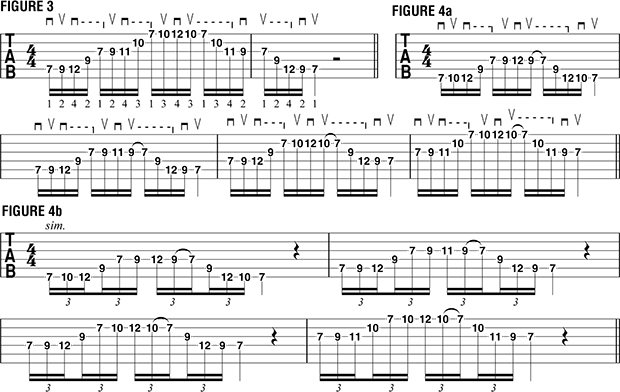Expanding Minor Pentatonic Ideas with Three-Notes-Per-String Phrases
Break free of the two-notes-per-string approach by combining it with three-notes-per-string patterns using sweep picking.

The title of this month’s column refers to the standard minor pentatonic “box” patterns that so many guitar players rely upon when soloing.
While they are valuable, they can be restricting if they represent the primary way in which one utilizes these scale patterns on the fretboard.
When playing in the standard box pattern, we generally play two notes per string. What I will do in this column is demonstrate a way to break free of the two-notes-per-string approach by combining it with three-notes-per-string patterns using sweep picking.
All of this month’s examples are played in the B minor pentatonic scale (B D E F# A). FIGURE 1 illustrates the scale played in a standard seventh-position box pattern. When playing the scale in this pattern, the index finger is used for all the notes that fall at the seventh fret, the ring finger frets all the notes at the ninth fret, and the pinkie is used for any notes at the 10th fret.

In FIGURE 2, I show how to break out of the box by starting the pattern using three notes per string, followed by a sweep across the low E, A and D strings, and a return to the three-notes-per-string shape. A similar pattern is employed across the D, G and B strings, after which I descend in the same manner.
Although I’m playing the same scale ascending and descending through two octaves as I did in FIGURE 1, this three-notes-per-string approach with sweeps allows me to create licks and soloing patterns that can be performed at a much faster speed than what would be attainable using the two-notes-per-string boxes. For the first three notes, I use alternate picking: down-up-down.
The last downstroke begins a sweep across the bottom three strings as I drag the pick in a single downward motion to sound the next three notes. The same picking scheme is then used across the D, G and B strings. On beat three into beat four, I use a pull-off to set up an upstroke sweep across the B, G and D strings, then perform a similar move across the bottom three strings.
The sweeps incorporated in this run represent three-string arpeggios, and a rather wide fret-hand stretch is mandatory for proper execution. I keep my fret-hand thumb squarely on the back of the neck so that my fretting fingers will remained arched throughout, allowing the maximum reach and physical comfort.

Now let’s start the pattern on the A string (FIGURE 3). A good way to practice these “shapes” is to break them into individual one-octave patterns. In FIGURE 4a, I play the patterns as 16th notes; in FIGURE 4b, I play them as 16th-note triplets.

Now let’s combine the low E string and A string approaches into a single run. In FIGURE 5, beats one through three represent the pattern starting from the low E string. At beat four, I begin the pattern from the A string, ultimately wrapping up with a descent back down to the low E.


In the final two examples, FIGURES 6 and 7, I demonstrate what I refer to as “monster runs” when using this approach. Eric Johnson is my primary inspiration for licks like these. In writing them, I attempted to create similarly breathtaking “sheets of sound” while remaining within the minor pentatonic structure.
Get The Pick Newsletter
All the latest guitar news, interviews, lessons, reviews, deals and more, direct to your inbox!










